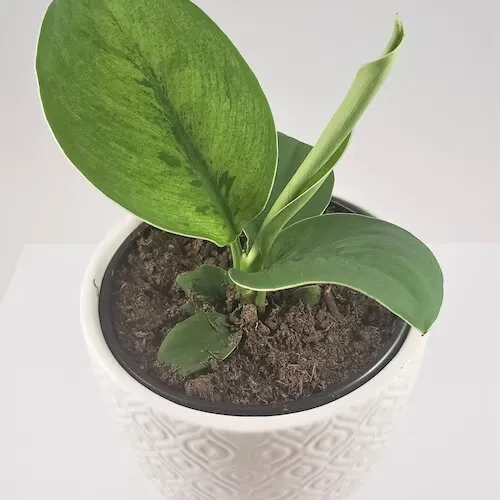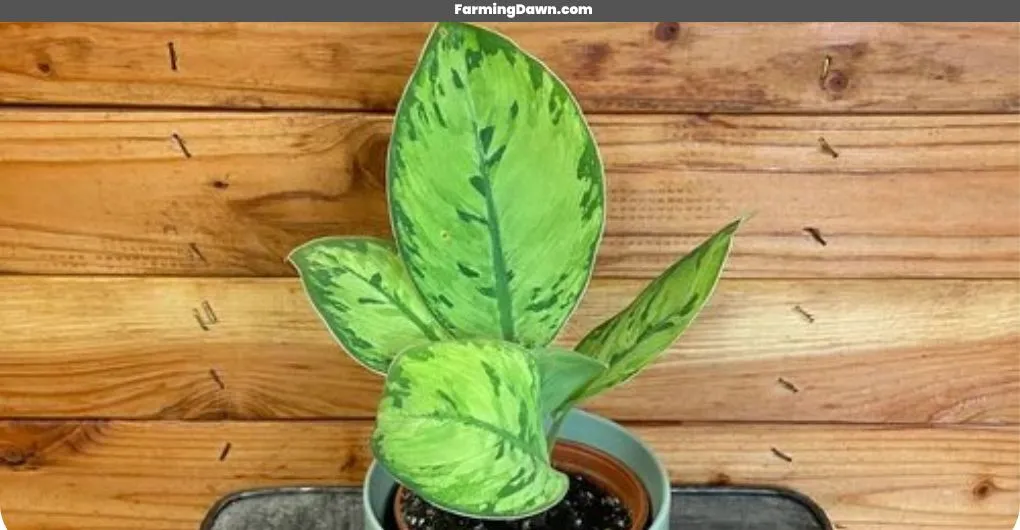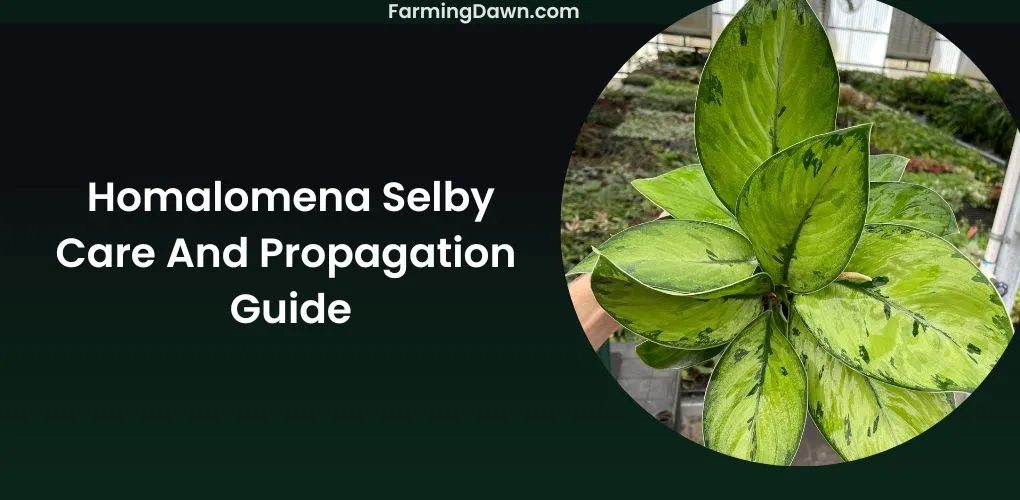Have you ever heard of the Homalomena Selby plant? If not, don’t worry, by the end of this article, you’ll be an expert! This fascinating plant is native to tropical regions and can bring a unique beauty to your home or garden with its variegated leaves. In this article, I’m going to give you an overview of Homalomena Selby, as well as how to care for it and propagate it.
You will feel part of a community of fellow green thumbs when you share stories about caring for your plants; so read on if you want to get started growing your own plant today!
Overview Of Homalomena Selby
Selby Homalomena is a unique and beautiful houseplant that is native to tropical regions of Southeast Asia. It’s an ideal choice for those who want to add a splash of color, texture, and vibrancy to your home. With its lush green leaves mottled with yellow spots, this mature homalomena selby adds color and interest wherever it goes.
Related: How to Care For Philodendron Quercifolium?
Here take a quick over at this beautiful plant!
| Common name | Queen of Hearts, Shield Plant, Selby |
| Botanical name | Adelomena wallisii |
| Genus | Homalomena |
| Plant Type | Perennial (slow to medium growing plant) |
| Hardiness Zones | 9 – 15 |
| Sun Exposure | thrives well in bright, indirect sunlight |
| Temperature | 65-90F (16-32 Celcius) |
| Size | 12-18 inches (30-45 cm) tall, and 15-18 inches (38-45 cm) wide |
| Maximum size | 3-4 feet (if properly cared for) |
| Color | green to burgundy |
How To Care For A Homalomena Selby
The most important thing about caring for any plant is understanding its size and growth potential. A selby homalomena can get pretty big, up to four feet tall, so make sure you have enough space in your home or garden before bringing one home!
Also, it likes bright indirect light with some direct sunlight throughout the day, consistent watering (without overwatering), and well-draining soil. If these conditions are met, then this beautiful houseplant will thrive and bring life wherever you place it! Let’s discuss these points in detail.
See more: How to care for Hoya Linearis?
Watering Requirements
Watering your Homalomena plant is an important part of its care. You’ll need to do it regularly, but don’t overdo it. This isn’t a houseplant that likes too much water! It’s best to wait until the top inch or so of soil feels dry before giving it another drink. I like to use room-temperature tap water or filtered water and avoid letting any sit in the saucer below for more than 15 minutes.
As long as you keep this up and provide enough humidity, you should have a happy and healthy Selby plant on your hands! Taking proper care of these plants will ensure they can thrive for years to come – just make sure not to overwater them!
Fertilizing Requirements
Fertilizing this plant isn’t too hard – the main thing is to use it sparingly. You don’t want to over-fertilize, as this can damage or even kill your plant! A good rule of thumb is that you should fertilize about once every week during the growing season.
Make sure you’re using a fertilizer specifically formulated for houseplants like homalomena selby, and if you’re looking for one, there are plenty of brands available online or in stores where they sell homalomena Selby for sale.
Start with half the recommended amount on the label; this will give your plant enough nutrients without risking any burn. And make sure you never fertilize right after repotting, wait at least four weeks before giving your new addition some extra nutrition.

Temperature Requirements
This section will give you the 411 on the ideal temperature for a homalomena. Just like Goldilocks, it’s all about finding that sweet spot – not too hot, not too cold. While they can tolerate low light and humidity levels pretty well, these plants prefer warm temperatures ranging from 65-90°F (18-32°C).
If your home is constantly cool due to air conditioning or is in an area with a cooler climate then you may need to think of ways to provide supplemental warmth. But be careful! Going over 90°F (32°C) can cause problems and will create a situation where you’re playing with fire. So if you want your plant to thrive keep its environment just right, neither too hot nor too cold.
How To Repot A Homalomena Selby?
Repotting your Selby homalomena can seem daunting at first, but don’t worry, it’s actually quite simple. All you need is a new pot with drainage holes, fresh soil that matches the needs of your plant, and some patience. Start by soaking the old soil in water until it starts to loosen up; then gently remove the root ball from its current container and shake off excess dirt.
Place the root ball into the new pot and fill it with soil as needed. Make sure not to cover any of the foliage or roots when planting since this may damage them. And after that, give your newly potted homalomena Selby a good watering to help settle everything in place and get ready for continued growth.
How To Propagate A Homalomena Selby?
For propagation, let’s start with the growth mediums for this type of plant. You should use light, well-draining potting soil. Next up is cutting and watering, and then light and temperature requirements. All in all, propagating a Selby is a fun and rewarding process! Let’s start it now!
See more: How to propagate Philodendron squamiferum?

Growth Mediums
As discussed before, the first step in propagating selby homalomena is choosing the right growth medium. You’ll want something that’s porous and well-draining, such as peat moss or sphagnum moss. I also recommend mixing in some perlite for added aeration.
Cutting And Watering
Once you have your growth medium ready, it’s time to start propagating. To do this, take a cutting from an existing selby homalomena plant – make sure that it has 2-3 leaves on it. Then place the cutting into your prepared potting mix and keep it moist by regularly watering it until you see signs of new growth.
Light And Temperature Requirements
Once you have your cutting taken care of and in the right potting mix, it’s time to focus on providing the best light and temperature conditions for successful propagation. Selby Homalomena needs plenty of indirect light – they don’t like too much direct sun, with temperatures ranging from 65-85 degrees Fahrenheit.
When taking care of these plants, make sure not to get lazy or complacent; if you provide an environment that is conducive to their growth, then there’s no reason why they won’t be propagated successfully! Just remember to keep them moist, give them enough indirect light and maintain a suitable temperature range for optimum care and propagation.
Common Problems With Homalomena Selby
Homalomena Selby is a unique and attractive houseplant that can bring a splash of greenery to any home. But just like any plant, it’s not immune to common problems. From pesky cats who think they’re an ideal scratching post, to overwatering or underwatering the delicate leafy foliage, there are many potential issues you should be aware of when growing this plant indoors.
To ensure your plant stays happy and healthy, do the following:
- Provide regular watering and fertilizing.
- Trim off dead leaves as needed.
- Provide plenty of light but avoid direct sunlight.
- Maintain proper humidity levels by misting often.
- Keep curious cats away from these delightful plants.
With thoughtful care, your Selby Homalomena will flourish in its new indoor habitat for years to come.
Is Homalomena Selby rare?
Selby Homalomena is a specific cultivar or variety of Homalomena plants. This species can be less common than others but it is not considered rare as compared to other Homalomena species. You can buy this product on Etsy or other online platforms.
Is Homalomena easy to care for?
Homalomena plants often require little maintenance. They need watering when the top inch of soil feels dry and enjoy bright, indirect light. They don’t require frequent fertilization and may tolerate lower light levels. Homalomena plants can flourish and add greatly to indoor or outdoor gardening with the right care.
Is Homalomena a philodendron?
Homalomena is not necessarily a Philodendron, but relatives of philodendron because both plants belong to the same family, Araceae. While they share some similarities in terms of appearance, Homalomena plants have their own distinct characteristics, such as more pronounced veining on their leaves and a different growth habit. They have different care requirements and may not tolerate the same growing conditions.
Homalomena Selby: Final Thoughts
In conclusion, caring for Homalomena Selby is not as difficult as it may seem. With the right conditions and care, you can have a beautiful houseplant to admire in no time! It’s true what they say:
“Treat them well and they will treat you better.”
As long as you provide adequate water, fertilizer, and light, your plant will reward you with gorgeous foliage year after year. So give it a try – I promise that you won’t regret it!





